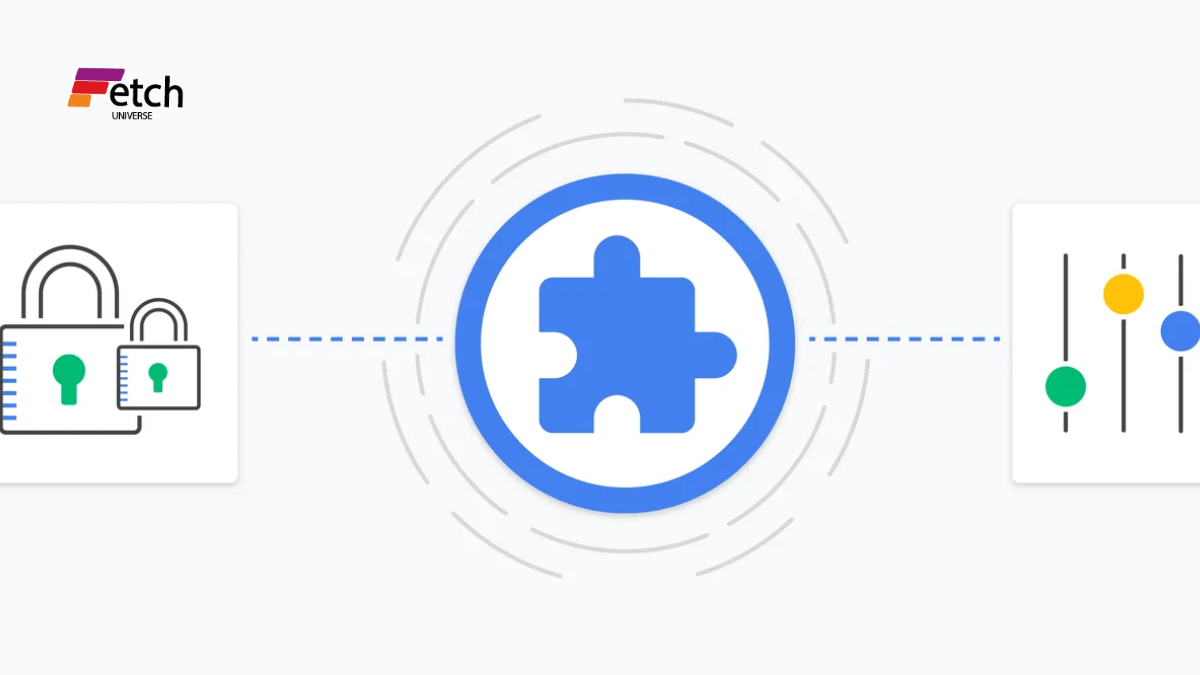How to find extension that is sending to https://xenthenconscet.com:443 in Details

Browser extensions are crucial to improving the experience in a world that is fast shifting towards digital environments. But they also have a security and privacy problem. If you notice strange behavior, such as your browser communicating with an unexpected domain like https: Thus when it comes to the Web resource at //xenthenconscet.com:443, it becomes important to research. In this guide, you are going to learn a systematic way to determine which extension is sending data to this address.
Understanding Browser Extensions
What Are Browser Extensions?
A browser extension is a type of add-on that adds new features to existing browsers or enhances the features of existing ones. They can do many things, for instance, remove adverts, handle passwords, or even extend capabilities. However, there are some extensions that may gather and forward user information to other servers to cause privacy issues.
This paper seeks to further explain why monitoring these extensions is very important.
Monitoring your browser extensions is essential for several reasons:
Security Risks: Some extensions can be dangerous posing threats to an individual’s data or granting unauthorized access.
Privacy Concerns: Extensions may monitor your actions online, and pass this information to third parties without your knowledge.
Performance Issues: Extensions of inferior quality may slow down the browser or may even lead to the browser freezing.
Through this article, you will learn how to track and control your extensions and thus improve your online security.

Step 1: Identify Installed Extensions
Prosecuting the investigations on the source of the unwanted data transmissions involves first identifying all the extensions currently installed in your browser. This can be done for the following popular browsers In the following way:
Google Chrome
- Open Chrome.
- Tap on the three horizontal lines that you’ll find in the top right corner of the window.
- Choose More tools on the top and select Extensions.
- This will make a new window appear with all the installation extensions you have in your browser.
Mozilla Firefox
- Open Firefox.
- Then click on the three horizontal lines mentioned at the extreme top right corner.
- Select Add-ons.
- To view the list of Extensions that are installed click Extensions.
Microsoft Edge
- Open Microsoft Edge.
- Click on the three horizontal dots in the upper-right corner.
- Select Extensions to see all the extensions you have on your computer.
Safari
- Open Safari.
- Click on Safari in the menu bar.
- In the open tab, go to the Extensions, here select Preferences.
Step 2: Review Permissions for Each Extension
The second part of the next process is to look at the permissions all the installed extensions are asking for. Almost all built-in extensions may need different permissions to operate optimally; however, some of them may seek more permissions than required.
Google Chrome
On the Extensions page, each extension will be shown having a brief description. For more details such as permissions, click Details.
Mozilla Firefox
Users visit the Add-ons Manager and check the desired extension then click the ‘More’ button to find out permissions.
Microsoft Edge and Safari
As was the case with Chrome, permission settings are available on the extensions page, in detail.
Be careful of such extensions, which require a lot of permissions. For example, an extension aimed at editing web pages should not require all the history connected with your browsing.
Step 3: Monitor Network Activity
To determine which extension is communicating with https: If you are accessing it from //xenthenconscet.com:443, you will have to watch for the browser’s network activity. This process may assist you in identifying the extent to which the particular extension is putting the data out.
Using Developer Tools
Many of today’s Internet browsers have integrated Developer Tools that can be used as tools for analyzing network activity. Here’s how to use them:
Open Developer Tools:
If you’re using Windows, right-click anyplace within a page and choose Inspect, or use the keyboard shortcut Ctrl + Shift + I.
Go to the Network Tab:
Then you should go to Developer Tools, and tap on the Network tab. This tab will let you see all the requests done by the browser in the network.
Reload the Page:
If you want to record all activity that occurs within a network, right-click and use the function to reload the particular page in question.
Filter by URL:
In the filter box of necessary reports, enter xenthenconscet.com to track all the requests that were made to the given domain.
Analyze Requests:
By clicking on each request, one gets to see the headers and the payloads which may help the discovery of what extension is responsible for the request.
Using Browser Extensions for Monitoring
Besides using Developer Tools, there are dedicated browser extensions designed to help monitor network activity:
Request Control: This extension helps you to control and track web requests that your app sends out.
Web Developer: Provides utilities for observing network traffic and analyzing page components that simplify the detection of troublesome extensions.
Must Read: Gramhir Pro: The Ultimate Instagram Analytics Tool
Step 4: Disable Extensions One by One
If you suspect a specific extension is responsible for sending data to https: On Firefox when you have enabled the extensions from //xenthenconscet.com:443, you can disable the extensions individually and see which one is causing the problem.
How to Disable Extensions
- I suppose that after reading this article the reader goes back to the Extensions page in their browser.
- Disable each extension active on the browser separately.
- After that, disable one of the extensions and monitor the network traffic again with the help of the Developer Tools.
- If the request to https://xenthenconscet.com:443 stops after disabling a particular extension, you have likely found the source of the issue.
Step 5: Uninstall or Report Suspicious Extensions
Once you identify an extension that is sending data without your consent, consider taking the following actions:
Uninstalling the Extension
- Go to the Extensions page.
- Select the item in the list you consider to be suspicious and click either the Remove or Uninstall button next to it on your right.
- When prompted, make sure to remove the confirmation.
Reporting the Extension
If the extension is from the Chrome Web Store, Firefox Add-ons, or another official repository, consider reporting it:
Chrome Web Store: Right-click on the extension and select Report Abuse.
Firefox Add-ons: Go to the extension page and locate the Report.
An increase in reporting allows other users to avoid possible security issues.
Step 6: Consider Alternative Extensions
This week’s topic of removing an extension is important because if an extension you were using was deemed to be problematic in terms of privacy, there is always an option to find one with similar features but does not compromise privacy. It is recommended they should always read their reviews and confirm permissions on acceptable extensions to install.
Researching Alternatives
When searching for alternative extensions, consider the following:
User Reviews: Just read some comments from people dealing with it to evaluate its stability and security risks.
Developer Reputation: You should look for the previous record from the developer in the form of trustworthy Firefox extensions.
Permissions: Make sure the new extension only declares the permissions which are required.

Step 7: Regular Maintenance of Extensions
Browser extensions’ updates are crucial for keeping security and performance lasting continually.
Periodically Check the Extension Currently Running
You should set a regular schedule to look through the extensions installed at your Chrome browser. Remove apps that are no longer needed or look suspicious.
Keep Your Browser Updated
Make sure you have the latest browser to avoid falling victim of the security risks of using an outdated browser. All browsers are automatically updated but it is recommended to check for updates manually once in a while.
Read Privacy Policies
This means that any extension you intend to install should not be installed without first getting to read through the privacy policy that accompanies it. Seek for policies that outline how information is gathered, and used and in what manner it is given out.
Limit Permissions
When using any extension, make sure you only install the most necessary ones from a permissions standpoint. The less rights that an extension requires, the less danger it is to your privacy and security.
Step 8: Use Security Tools
However, it is also possible to monitor browser extensions manually and, if this does not suffice, use security tools that can also alert about and prevent the use of dangerous browser extensions.
Antivirus Software
Most antivirus software comes with some additional protection that is programmed to as an identification point for dangerous browser additions. Install antivirus programs in the computers in the computer lab and you should ensure they are updated.
Browser Security Features
Current browser has security features which may help you protect yourself from such extensions. For instance, Chrome and Firefox give alerts when you attempt to download malicious plugins.
Privacy-Focused Browsers
Perhaps more consideration of using the privacy-oriented ‘new’ browsers like Brave or Firefox Focus with default, enhanced privacy settings that block tracking scripts, and malicious add-ons by default.
Step 9: Understanding the Risks
It is important to know what dangers lie in the use of browser extensions to avoid being easily exposed to malicious activities.
Common Risks of Malicious Extensions
Data Theft: Cybercriminals may steal personal data, including passwords, credit card details, and the history of the visited websites.
Unauthorized Access: Most of these extensions can take control of your browser and perform operations that are not desirable to the user.
Ad Injection: Some extensions can banner ads that interfere with the visit, and may even redirect to fake sites.
Recognizing Red Flags
Be on the lookout for the following red flags that may indicate an extension is malicious:
Excessive Permissions: Extensions with a variety of permissions beyond the basic functions or services they propose.
Poor Reviews: Extensions with a high review negative or having complaints of privacy infringement.
Unfamiliarity: Programs and plug-ins from unknown companies or those that you are not sure that you have ever opted for them from the web.
Conclusion
Identifying which extension is sending data to https: To deal with this website, |www.xenthenconscet.com:443, one needs to follow certain procedures. If you install extensions, it is possible to look at the permissions that extensions have and monitor the network activity, thus identifying which extension transfers data to third parties without the user’s consent disabling the extensions step by step. The three preventive measures include frequent updates, keeping yourself knowledgeable of the risks involved in the internet, and using various security instruments on the internet.
And in the era when threats related to browsers and their extensions become finer and finer, it is critically important to be preventive. As you read through this guide, you will learn how you can avoid being a victim by actively managing the risks posed to you on the internet. It’s always wise to always consider your security and privacy when you are in cyberspace to have a more comfortable and secure experience.
FAQ’s
Q 1: What are browser extensions?
Answer: Browser extensions are additional applications that enhance a web browser by adding new capabilities to it. They can improve general browsing by removing ads, passwords, and anything that the user does not want to see, or offering other utilities.
Q 2: Why should it matter to me that such extensions are sending information to other sites I do not know?
Answer: Browser extensions that transmit data to unfamiliar or potentially unsafe websites also create vulnerabilities: data theft, unauthorized data access, and malware.
Q 3: What is the way I can know which extensions are running on my browser?
Answer: Extensions currently installed can be seen on the browser’s extensions page of your browser settings. For instance, if you are using the Chrome browser, click on the “More tools” option and then select “Extensions“, on Firefox, select “Add-ons.”
Q 4: Which permissions will wait for my extensions?
Answer: When looking for permissions it will be beneficial to look at those that should be related to the function of the extension. Avoid using extensions that require permissions beyond reasonable ones which include; permission to the browsing history or data on all websites.
Q 5: Need a way of tracking all network activity in search of the culprit at extension?
Answer: Go to the web developer tools section of your browser. Go to Developer Tools then select Network, then try to inspect the area again then you will find at the bottom you have choices that you can tick or filter by URL and look for xenthenconscet.com to find out what request is being sent.
Q 6: How to find extension that is sending to https://xenthenconscet.com:443
Answer: If you find an extension that is sending data to that site, it would be better to disable or uninstall the extension. Besides, you can report it to the browser’s extension store.
Q 7: Is it possible to enable/disable the extensions one by one only to find which one of them is problematic?
Answer: Yes, you are right, extensions can be turned off one at a time, and network traffic can be monitored once more. This method provides you the clue to tell which one of the extensions is involved in data transmission.
Q 8: What is the best thing to do if you need to remove an extension that was installed through the scam Advertisement?
Answer: Search for similar extensions that can accomplish the necessary task but are developed by accredited authors that are not reported to contain malicious code by users and which in turn require as few permissions as possible.
Q 9: Is it necessary to check frequently the installed extensions?
Answer: Indeed, it is recommended to check occasionally the extensions and tools installed on your browser, and, if this is the case, uninstall all unused and/or suspicious ones.
Q 10: Are there ways to privacy while using the browser extensions?
Answer: To look for extensions – only use verified ones, to limit permissions – provide only basic level ones, to keep your browser safe – update it regularly, also you might think about using additional security features or using browsers focused more on privacy.










